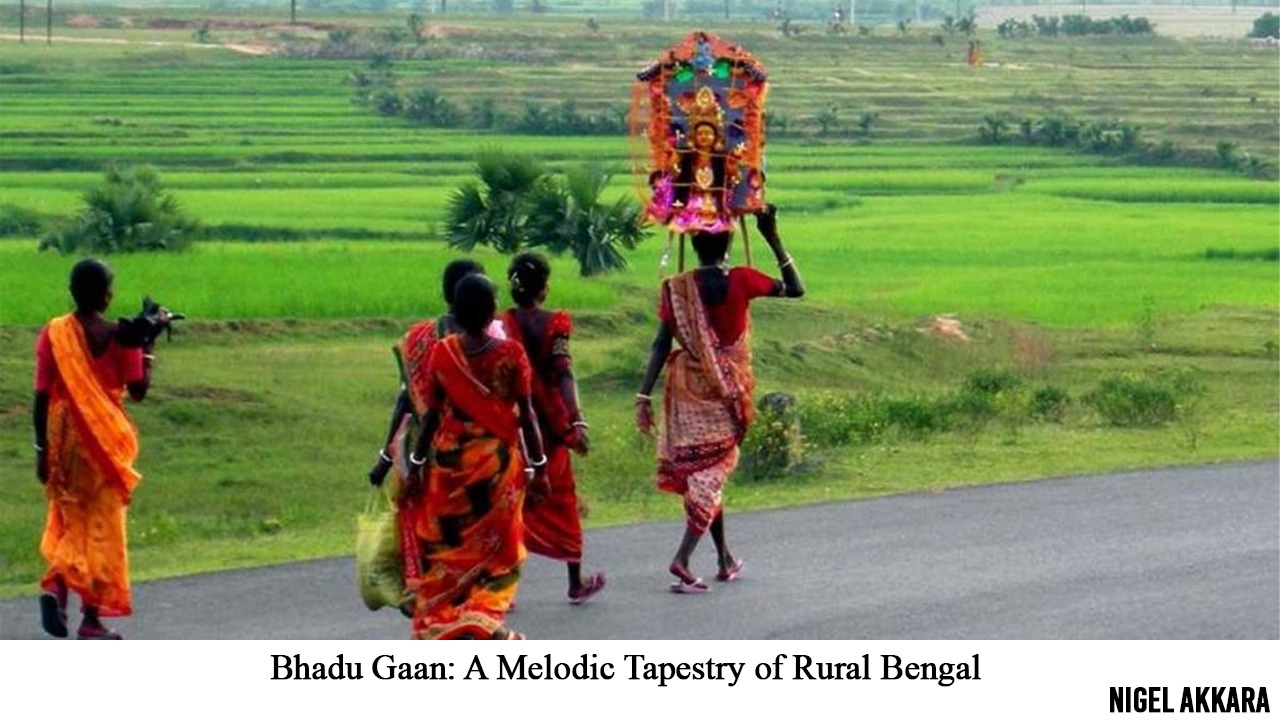Bhadu Gaan: A Melodic Tapestry of Rural Bengal
Introduction:
Bhadu Gaan, a traditional folk music genre originating from the rural heartlands of Bengal, holds a unique place in the cultural tapestry of the region. Rooted in the agrarian lifestyle and the rituals associated with the monsoon season, Bhadu Gaan encapsulates the joy, struggles, and communal spirit of the farming communities.
What does “Bhadu” Refer?
The term “Bhadu” refers to the Bengali month of Bhadra, which corresponds to the monsoon season. Bhadu Gaan, therefore, is intimately connected to the agricultural calendar, celebrating the onset of rain and the subsequent sowing of crops. This folk music is not merely an auditory experience but a cultural phenomenon that accompanies the cyclical rhythm of rural life.
What are it’s distinctive features?
One of the distinctive features of Bhadu Gaan is its reliance on traditional instruments, creating a rustic ambiance that resonates with the agricultural landscape. Dhol, Madol, and Dotara are commonly used, weaving a melodic tapestry that mirrors the sounds of the countryside. The lyrics, often simple and earthy, narrate tales of the farmers’ toil, their connection with the land, and the emotional nuances of rural life.
The themes explored in Bhadu Gaan go beyond the mundanities of farming; they delve into social issues, love, and the cultural ethos of rural Bengal. The songs often portray the resilience of the farming community in the face of adversities, painting a vivid picture of their daily struggles and triumphs. This storytelling aspect not only entertains but also serves as a means of preserving and passing down the collective wisdom of the community.
Bhadu Gaan is not confined to the performance space; it is an integral part of various festivities and rituals associated with the monsoon season. The songs are sung during weddings, fairs, and other communal gatherings, fostering a sense of unity and shared identity among the villagers. The participatory nature of Bhadu Gaan further strengthens the social fabric, as it involves collective singing and dancing, creating a lively and inclusive atmosphere.
While Bhadu Gaan has deep roots in tradition, it has also evolved over time, adapting to the changing socio-cultural landscape. Contemporary artists have taken inspiration from this folk genre, infusing modern elements while staying true to its rustic essence. This dynamic nature ensures that Bhadu Gaan remains relevant and continues to resonate with audiences across generations.
What challenges it faces in modern era?
Despite its cultural significance, Bhadu Gaan faces challenges in the modern era. The increasing urbanization and changing agricultural practices have led to a gradual decline in the agrarian way of life that forms the backdrop of this folk music. Efforts to preserve and promote Bhadu Gaan are crucial in ensuring that this rich cultural heritage doesn’t fade into obscurity.
Conclusion:
In conclusion, Bhadu Gaan stands as a testament to the cultural vibrancy of rural Bengal. Its roots in agriculture, simplicity in lyrics, and communal celebration make it a cherished folk music genre. As we embrace the modern era, it is essential to recognize and preserve such traditions, acknowledging their role in shaping the cultural identity of a region. Bhadu Gaan, with its timeless melodies and poignant narratives, continues to be a living heritage, connecting the present with the rich tapestry of the past.




There are no comments